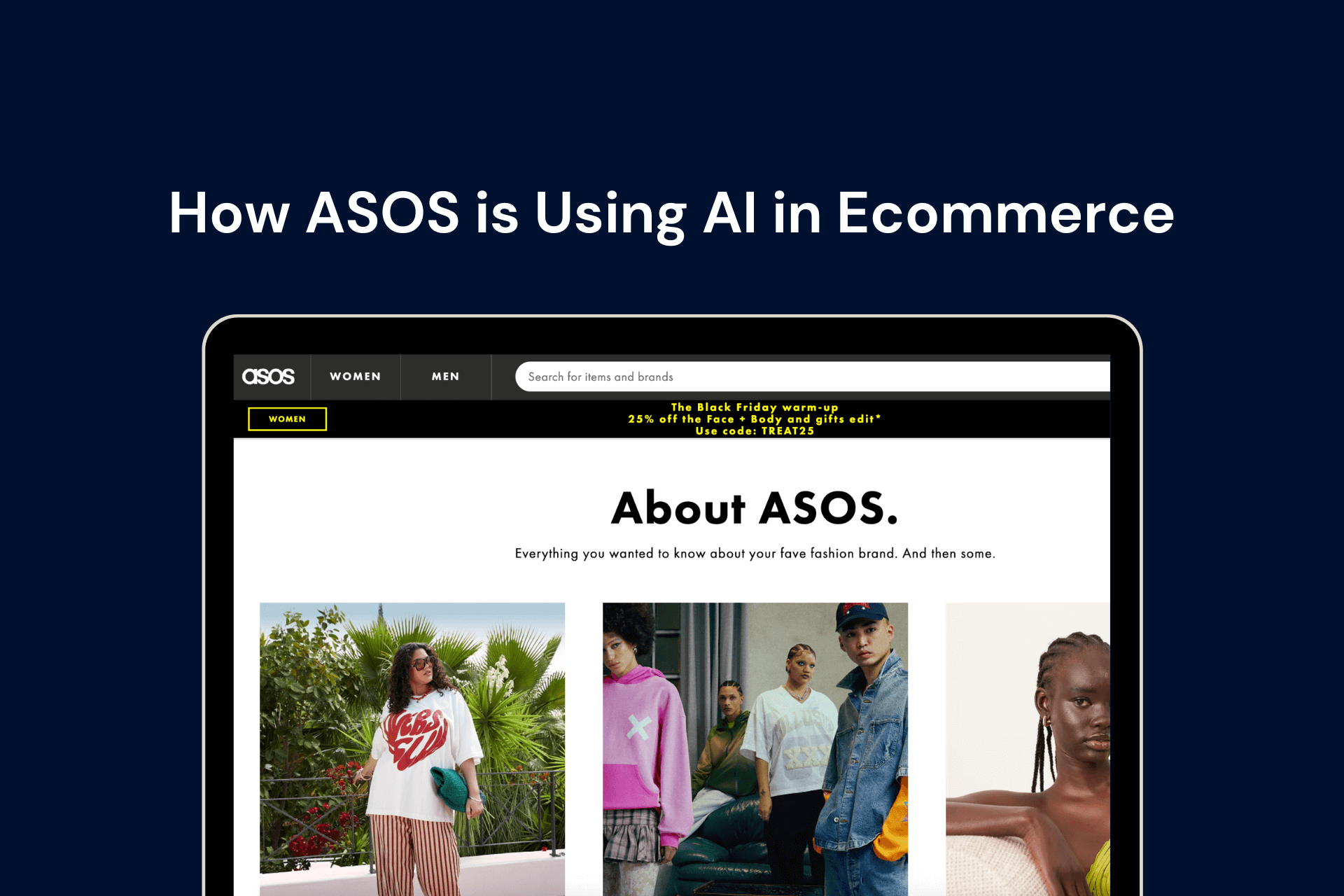Shopify semantic search uses AI to match user intent. Set it up by cleaning product data, choosing native Shopify Search & Discovery or a 3rd-party provider (Algolia, Klevu), testing with sample queries, and monitoring CTR & revenue per search.
Traditional keyword search on Shopify stores do not always give the best results.
Poor search results lead to high bounce rates, frustrated customers, and missed revenue.
That’s where Shopify semantic search comes in!
The AI-powered search engine ensures contextual and intent-based product results.
In this blog, we tell you how Shopify merchants can turn on semantic search the right way.
Let’s get started!
-
Traditional keyword-based search considers exact words, missing relevant products and limiting product discoverability. It does not understand context, synonyms, or long-tail queries.
-
Shopify semantic search uses AI and ML to understand customer intent and context, recognizes synonyms, interprets natural language, and learns from customer behavior.
-
Shopify Plus merchants using semantic search report 20-40% improvements in conversion rates. Moreover, the system can handle large product catalogs, leading to faster purchase decisions, increased loyalty, and scalability.
-
Implementation best practices include cleaning existing product data, setting up Shopify native tools or third-party AI platforms, creating a strategic product taxonomy from customers’ perspective, and running tests.
-
Common mistakes to avoid are: not to deploy on poor data, not to ignore how customers search, focusing only on top queries, skipping A/B testing, and not monitoring consistently.
-
The success metrics of semantic search includes tracking click-through rates, add-to-cart rates, conversion rates, revenue per search, bounce rates, and more.
Why do Shopify Stores Struggle With Traditional Search?
Traditional search settings function on rigid keyword matching, looking for exact words. It doesn’t have the intelligence to understand context or meaning. Here’s why Shopify stores struggle:
1. Rigid keyword matching destroys relevance: Say a customer searches for a laptop bag, but the relevant products on your website are tagged as computer cases, the search results will not show anything.
2. Synonym gaps create blind spots: When a shopper searches for a sweatshirt, traditional search settings miss out products tagged as hoodie or pullover. This leaves out many relevant products from the search.
3. Long-tail queries don’t work: Traditional keyword search systems do not have the ability to understand long-tail queries. For example, ‘waterproof outdoor solar lamp for garden with 10 MW brightness’. Traditional systems cannot understand the relationship between words.
4. Poor filtering and ranking: The search results in traditional systems often rank alphabetically or are based on simple metrics. The results aren’t relevant as the best matching product could actually be buried in some page.
What is Shopify Semantic Search?
While traditional eCommerce search systems function only on exact keywords, semantic search systems match keywords to relevant products. Semantic search understands meaning.
The main difference between traditional and semantic searches is that traditional search only looks for matching words in the product listing, while semantic search tries to understand what the customer is trying to find and which products best match the search.
Here’s how semantic search works.
Semantic search engines bring into play natural language processing and machine learning to interpret shopper queries. Semantic engines understand synonyms, relationships between concepts, and understand preferences based on query. Over time, this AI site search system learns and improves by tracking customers’ activities.
For example, when a customer searches for ‘eco-friendly yoga mat under INR 500’, it pulls out products that are tagged with various other related words, such as:
-
Sustainable materials, such as organic, biodegradable, recyclable, etc.
-
It looks at yoga mat as the main product category
-
$50 is a price reference applied as a filter
-
It understands that the combination of search words refers to a price-sensitive shopper who is environmentally conscious
Example:

How Does AI-Powered Shopify Semantic Search Improve Product Discovery?
Semantic search makes product search a more intuitive experience. Ecommerce stores that use semantic search, report 20 to 40% improvements in conversion rates and increase in average order value. Here’s how AI improves product discovery:
1. AI learns from actual behavior
Semantic systems track and monitor customer behavior and actions. For instance, what customers click on, add to cart, purchase, browse, etc. If customers explore ‘breathable shoes’ and consistently browse open toe shoes rather than closed ballerinas, the AI tools learn that open toe is related to breathable shoes. This kind of intelligence keeps making the eCommerce search automation systems smarter.
2. Natural language becomes the new normal
Customers have a habit of searching for products in the language and way they speak. For example, invoice and conversational searches, they might say, ‘gifts for V-day under $50’. Semantic search engines know how to handle these searches because they are designed to understand context.
3. Relevance increases engagement
When shoppers see search results matching their requirements the first time they search, their satisfaction levels rise. This leads to lesser bounce rates. Moreover, click-through rates also increase because the products are more relevant. Time spent on the site also increases because shoppers get to see products they are interested in.
4. Product discovery experience gets enhanced
Ecommerce search automation systems enhance various aspects of shopping. For instance, it improves filters, autocomplete by suggesting relevant completions, and provides better recommendations by understanding products that relate contextually.
What are the Benefits of Shopify Semantic Search for Merchants?
Here are some ways in which Shopify merchants benefit from semantic search.
1. It makes catalogs manageable
Large enterprise stores often have thousands of SKUs. Traditional search engines may not be able to handle large inventories and catalogs. And hence, products may get lost in rankings. Worst is, products may never appear in searches. But with semantic search, every product can get discovered and ranks according to its relevance to searches.
2. Conversion rates increase
When eCommerce search automation results provide products that match what customers are looking for, conversion rates increase. Customers making searches are high-intent shoppers, and semantic systems ensure they get what they’re more likely to buy.
3. Personalization at scale becomes easier
Shopify semantic search engines understand what different customers prefer and what a specific search means to different customers. For example, the words ‘luxury furniture’ can mean different things to different customer segments. Semantic search understands this can show personalized products.
4. Purchase decisions accelerate
When search engines provide relevant products, purchase decisions become faster. In traditional search, customers have to go through many irrelevant products and hence they take a long time to make purchase decisions. Semantic search removes this friction, thus, reducing the time to checkout.
5. Scaling becomes sustainable
When adding a large number of products to your catalog, you need not tag them manually or set search rules manually. Shopify semantic search engines have the ability to automatically understand new products based on descriptions, attributes, and how customers engage with those products. It requires less effort.
6. Customer lifetime value increase
When customers have an easy experience, they tend to return and make repeat purchases. When they are effortlessly able to find what they need, they might stop going to competitor sites that have difficult search processes, thus, build loyalty and increase LTV.
How to Implement Semantic Search on Shopify the Right Way
Here are the steps to implement semantic search in Shopify AI workflows in the right manner:
1. Set up Shopify native tools
The Shopify platform’s search and discovery tools provide basic functionality. These basic features can be improved with AI site search capabilities. For Shopify Plus merchants, it integrates with existing workflows. Its basic implementation does not require customization.
2. Evaluate specialized AI search platforms
Third-party tools, such as Algolia, Klevu, Constructor, among others, can add advanced eCommerce search automation capabilities. The platforms can provide sophisticated algorithms, deep analytics, and pre-trained models, which can be gamechangers for high-volume stores.
3. Leverage Shopify AI workflows
Shopify has AI features that can automatically tag products semantically, and also generate search-optimized descriptions. These tools reduce manual work. Maximize the use of AI-powered tools and systems within Shopify.
4. Clean your product data first
AI cannot fix poor data. Hence, it is critical to clean your existing product data first. You can start by standardizing product titles and descriptions, fill in all product attributes (color, size, material), create logistical collections and categories, add high-quality product tags, and ensure consistent naming conventions.
5. Implement strategic product taxonomy
When creating categories, think from the customers’ perspective - how do customers think? Use metadata and product attributes that are related to searches, such as occasion, style, benefits, material, seasons, etc.
6. Consistently run tests
Test common searches to see the results. For instance, search for ‘summer holiday beach dress’, or ‘gifts for new born babies’, etc. Use search analytics tools to identify high-volume queries with poor performance and optimize accordingly.
7. Follow this integration checklist
Audit your current search performance, clean and standardize data, choose your platform, configure Shopify semantic search settings, test extensively with real query samples, soft launch with a customer segment, monitor metrics and iterate, and go for full rollout once performance validates improvement. XgenTech can help you assess, implement, and integrate your Shopify semantic search models.
Common Mistakes Merchants Make with Semantic Search
Technical implementation of semantic search tools is just the beginning. For successful utilization, merchants have to stay away from making these mistakes:
1. Deploying Shopify semantic search on dirty data
AI cannot create structure from chaos and poor data. Hence, if your product titles and descriptions are not standardized, AI will give only mediocre results. One of the number one mistakes that merchants end up making is not standardizing their existing product data and making semantic search tools work with poor data.
2. Ignoring customer language
Customers search for products in their own language, not yours. Hence, if your products are not tagged with the language that customers use, your semantic search tools will not give proper results. Hence, you must first analyze customer search queries, understand how they search for products, and then use similar language.
3. Overlooking long-tail and voice queries
Many merchants focus on the top search queries and ignore the rest. But merchants ignore the fact that long-tail searches represent the highest-intent customers. Hence, they need to train semantic search engines to handle long-tail queries as well.
Example:

4. Skipping A/B testing
A lot of merchants make the mistake of deploying semantic search to 100% of traffic without testing it. Before deploying semantic search, you should validate it. Conduct tests to compare semantic searches against your existing search system. Measure the conversion rates, bounce rates, click-through rates, and revenue.
5. Setting and forgetting
Another mistake that merchants make is to set up semantic search engines and then forget about it. Semantic search systems have to be optimized from time to time based on customer behavior changes, new product launches, seasonal changes, etc. It is essential to monitor key metrics weekly and monthly.
6. Not training the model with feedback loops
Merchants fail to properly track behavioral data and feed it back into the semantic model. In this case, AI fails to learn and thus, doesn’t provide expected results or ROI. Implementing strong tracking and model retraining is important.
7. Ignoring mobile and voice considerations
Training Shopify semantic searches for both mobile and voice searches is important. For instance, mobile searches are shorter, while voice searches are more conversational. Your semantic search models have to be trained for both contexts.
How to Measure Success of AI-Powered Semantic Search?
To be able to optimize your semantic search engine, you have to first measure its metrics. Here’s how to measure the success of AI-based semantic search.
-
Click through rate (CTR) by measuring the percentage of searches that result in at least one click
-
Add-to-cart rate by measuring how often searches convert to cart additions
-
Search-to-purchase conversion rate to measure how many searches result in completed orders
-
Revenue per search session to know the AOV of sessions that include search activity
-
Bounce rate from search results
-
Time on site after search to understand shopper engagement levels
-
Pages per search session viewed to understand the discoverability factor
-
Zero result rate by measuring the percentage of searches that do not provide any products
-
Refined search rate to understand how often customers have to change their queries for better results
-
Top query performance to know which searches drive more revenue
Why Should Shopify Plus Merchants Take Semantic Search Seriously?
Semantic search if not implemented well can be underutilized. Here’s why enterprise brands should take it seriously:
1. Large scale catalogs create large problems
Managing thousands of SKUs across categories, brands, and markets can be catastrophical. Products can get lost and never be found by search engines. Customers end up facing decision paralysis. Merchandising teams end up spending time in creating manual synonym lists, search rules, etc. Semantic search can be an effective solution to all these problems.
2. Merchandising efficiency multiples
Implementing semantic search and freeing your merchandising team’s time for more strategic work. For instance, which products to feature, how to position new launches, etc. Human teams can focus on these strategies, while AI tools do all the repetitive work.
3. International expansion becomes easy
Shopify Plus and enterprise brands often cater to various countries or keep expanding to new regions. Semantic search models are designed to understand multilingual queries. Thus, this system does not require separate rules for different markets.
Summing up
While traditional search can have a negative impact on your Shopify revenue, semantic search can unlock relevant and intent-based product discovery, leading to increased ROI.
For Shopify Plus enterprise stores, semantic search is a necessity and competitive advantage.
Partner with XgenTech to implement Shopify semantic search that aligns AI intelligence with your business goals.
Frequently Asked Questions About Shopify Semantic Search
1. How do I enable semantic search on Shopify?
You can enable semantic search by using Shopify’s Search & Discovery app or integrating AI-based tools like Algolia, Klevu, or Constructor.io. These tools analyze product data and search behavior to deliver intent-based results.
2. Why is semantic search important for Shopify stores?
Semantic search improves product discoverability, boosts conversion rates, and enhances user experience by showing more accurate, relevant results — even from vague or misspelled queries.
3. Do I need coding skills to set up Shopify semantic search?
No, most Shopify AI search tools and Shopify’s native app offer easy setup without coding. For advanced configurations or headless stores, developers can customize filters and search ranking through APIs.
4. Which Shopify apps support semantic search?
Top Shopify-compatible tools include Shopify Search & Discovery, Algolia, Klevu, and Constructor.io, all offering semantic search, personalization, and analytics features.
5. How can I measure the success of semantic search on Shopify?
Track KPIs like search conversion rate, zero-result searches, click-through rate, and average order value. Use Shopify Analytics or integrated app dashboards to monitor these metrics.
6. Does semantic search improve SEO for my Shopify store?
Yes. By improving user experience and engagement, semantic search can indirectly boost SEO. Google rewards pages with low bounce rates and better search satisfaction.
7. How do I optimize product data for better semantic search results?
Use detailed product titles, attributes, and descriptions with natural language and synonyms. Tag related items and maintain consistent product categorization for improved AI accuracy.
8. What are the best practices for implementing Shopify semantic search?
Clean your product data, choose a reliable AI-powered search tool, test real customer queries, and monitor performance regularly. Continuously refine search results using analytics insights.




